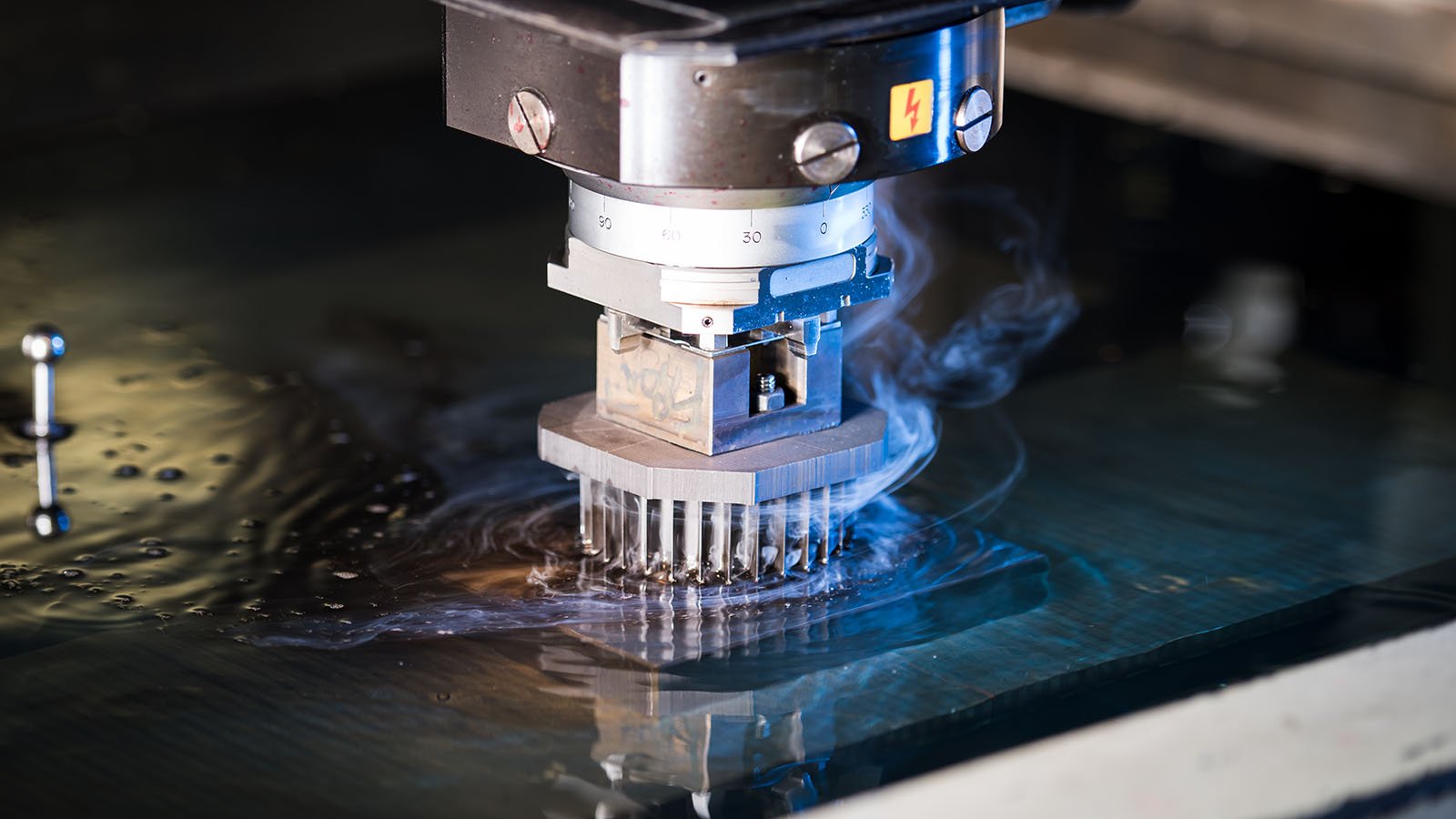If you’ve been inside a mold shop, you’ve likely seen a few electrical discharge machines (EDM). They are widely used in the industry and come in a few different styles. We’re going to go over the different types of machines and how they are used in the injection molding industry, as well as general machining. There are three types of EDMs: Ram, Wire, Drilling.
Ram EDM
The Ram EDM, sometimes called sinker, die sinker, or plunger uses an electrode to produce the desired shape in material via electrical current. This is best shown in the video below.
First, a machinist will use 3D data of the desired part and design various electrodes around the part. As you can see in the video, the electrode is the opposite of the desired shape in the material. For more on this machining process, check out this post on graphite milling.
Once the electrode is made, it’s placed into the the Ram EDM. A dielectric oil then surrounds the material and electrode. The oil is a critical component in the process as it serves as an ionizer for the current, flushes out the material being removed, and cools the electrode and workpiece.
Compared to a CNC Mill or Lathe material is moved relatively slowly when common/soft steels are used. The advantages of the EDM compared to standard CNC machining are the ability to machine extremely hard materials with ease, produce features that are either difficult or impossible on other equipment, and produce an array of textures.
Wire EDM
Like the Ram EDM, the wire EDM uses electrical current to remove material. The difference is that instead of using a machined electrode, a wire is used to cut a narrow channel through material. The wire is continuously moving so that it does not wear and break due to the corrosive nature of the EDM process. The wire EDM is extremely accurate and used for making inserts, insert pockets, precision holes, tapered pockets, and small holes. Like the Ram, the wire can cut hardened material with ease.
Drilling EDM
Often called a “Hole Popper,” the drilling EDM functions using a spinning electrode rod to “drill” into materials. In the most simple form, workpieces are manually moved and the hole popper is manually aligned to location. However, much more advanced multi-axis CNC hole poppers have been developed.
Since Wire EDMs require a starting hole, these machines are often used in tandem, where the hole popper creates a small starting hole that wire EDM can work from as a starting point. Hole poppers can also create relatively accurate holes. They are also great for removing broken drills and taps (not that I have ever done that).
These three types of EDMs are used extensively for injection mold building. At Basilius, we have an entire room dedicated to this process. Not only for own tool building but also for other production machining applications. We also offer each process as a service to other tool builders or machine shops.


